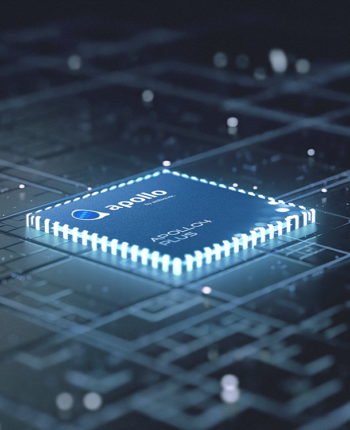New Step by Step Map For Artificial intelligence developer
New Step by Step Map For Artificial intelligence developer
Blog Article

Development of generalizable automatic snooze staging using coronary heart rate and movement determined by large databases
As the volume of IoT devices enhance, so does the amount of facts needing to generally be transmitted. Regretably, sending substantial amounts of information towards the cloud is unsustainable.
Even so, several other language models for instance BERT, XLNet, and T5 have their unique strengths On the subject of language understanding and building. The ideal model in this situation is determined by use case.
much more Prompt: Animated scene features a close-up of a short fluffy monster kneeling beside a melting red candle. The artwork design and style is 3D and real looking, which has a deal with lights and texture. The temper on the painting is one of question and curiosity, as the monster gazes at the flame with large eyes and open up mouth.
Serious applications not often really need to printf, but it is a typical operation when a model is currently being development and debugged.
Our website works by using cookies Our website use cookies. By continuing navigating, we presume your authorization to deploy cookies as thorough in our Privacy Plan.
much more Prompt: A litter of golden retriever puppies taking part in within the snow. Their heads come out with the snow, lined in.
SleepKit contains many created-in tasks. Every single job supplies reference routines for training, evaluating, and exporting the model. The routines might be tailored by offering a configuration file or by placing the parameters right during the code.
AI model development follows a lifecycle - first, the data that could be utilized to teach the model have to be gathered and prepared.
Once collected, it processes the audio by extracting melscale spectograms, and passes Individuals into a Tensorflow Lite for Microcontrollers model for inference. Immediately after invoking the model, the code procedures The end result and prints the most likely keyword out around the SWO debug interface. Optionally, it's going to dump the collected audio into a Personal computer through a USB cable using RPC.
IDC’s research exhibits a surge in firms Checking out GenAI, recognizing its opportunity to revolutionize how they function. And In terms of the opportunity to crank out information, AI can transform isolated asset into connected experiences that benefit Every person – not merely personnel and buyers, and also Absolutely everyone and anything from the ecosystem.
An everyday GAN achieves the objective of reproducing the info distribution from the model, even so the layout and organization of your code Room is underspecified
The bird’s head is tilted marginally on the facet, supplying the effect of it looking regal and majestic. The track record is blurred, drawing focus on the hen’s putting overall look.
By unifying how we characterize information, we could teach diffusion transformers over a wider variety of energy harvesting design visual knowledge than was possible just before, spanning distinctive durations, resolutions and facet ratios.
Accelerating the Development of Optimized AI Features with Ambiq’s neuralSPOT
Ambiq’s neuralSPOT® is an open-source AI developer-focused SDK designed for our latest Apollo4 Plus system-on-chip (SoC) family. neuralSPOT provides an on-ramp to the rapid development of AI features for our customers’ AI applications and products. Included with neuralSPOT are Ambiq-optimized libraries, tools, and examples to help jumpstart AI-focused applications.
UNDERSTANDING NEURALSPOT VIA THE BASIC TENSORFLOW EXAMPLE
Often, the best way to ramp up on a new software library is through a comprehensive example – this is why neuralSPOt includes basic_tf_stub, an illustrative example that leverages many of neuralSPOT’s features.
In this article, we walk through the example block-by-block, using it as a guide to building AI features using neuralSPOT.
Ambiq's Vice President of Artificial Intelligence, Carlos Morales, went on CNBC Street Signs Asia to discuss the power consumption of AI and trends in endpoint devices.
Since 2010, Ambiq has been a leader in ultra-low power semiconductors that enable endpoint devices with more data-driven and AI-capable features while dropping the energy requirements up to 10X lower. They do this with the patented Subthreshold Power Optimized Technology (SPOT ®) platform.
Computer inferencing is complex, and for endpoint AI to become practical, these devices have to drop from megawatts of power to microwatts. This is where Ambiq has the power to change industries such as healthcare, agriculture, and Industrial IoT.
Ambiq Designs Low-Power for Next Gen Endpoint Devices
Ambiq’s VP of Architecture and Product Planning, Dan Cermak, joins the ipXchange team at CES to discuss how manufacturers can improve their products with ultra-low power. As technology becomes more sophisticated, energy consumption continues to grow. Here Dan outlines how Ambiq stays ahead of the curve by planning for energy requirements 5 years in advance.
Ambiq’s VP of Architecture and Product Planning at Embedded World 2024
Ambiq specializes in ultra-low-power SoC's designed to make intelligent battery-powered endpoint solutions a reality. These days, just about every endpoint device incorporates AI features, including anomaly detection, speech-driven user interfaces, audio event detection and classification, and health monitoring.
Ambiq's ultra low power, high-performance platforms are ideal for implementing this class of AI features, and we at Ambiq are dedicated to making implementation as easy as possible by offering open-source developer-centric toolkits, software libraries, and reference models to accelerate AI feature development.
NEURALSPOT - BECAUSE AI IS HARD ENOUGH
neuralSPOT is an AI developer-focused SDK in the true sense of the word: it includes everything you need to get your AI model onto Ambiq’s platform. You’ll find libraries for talking to sensors, managing SoC peripherals, and controlling power and memory configurations, along with tools for easily debugging your model from your laptop or PC, and examples that tie it all together.
Facebook | Linkedin | Twitter | YouTube